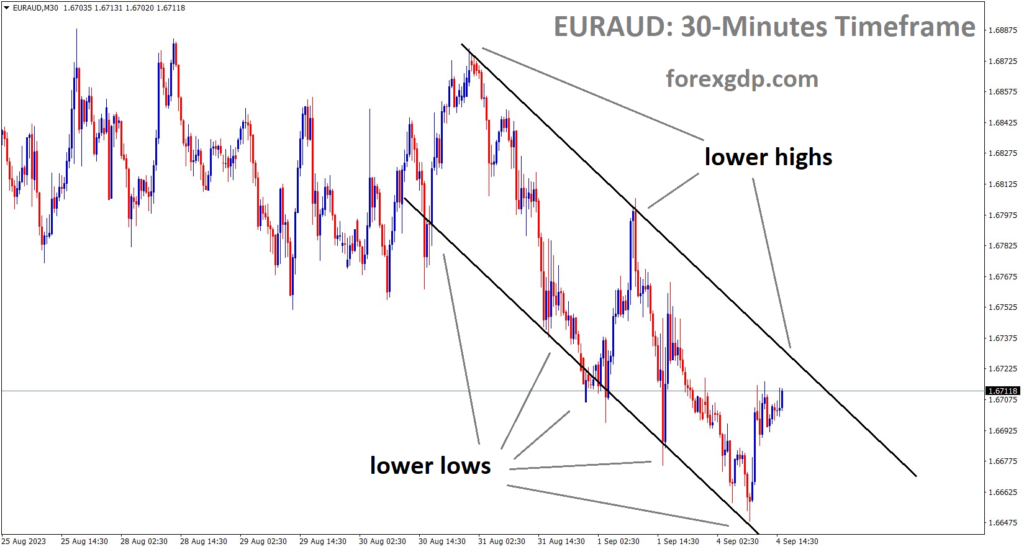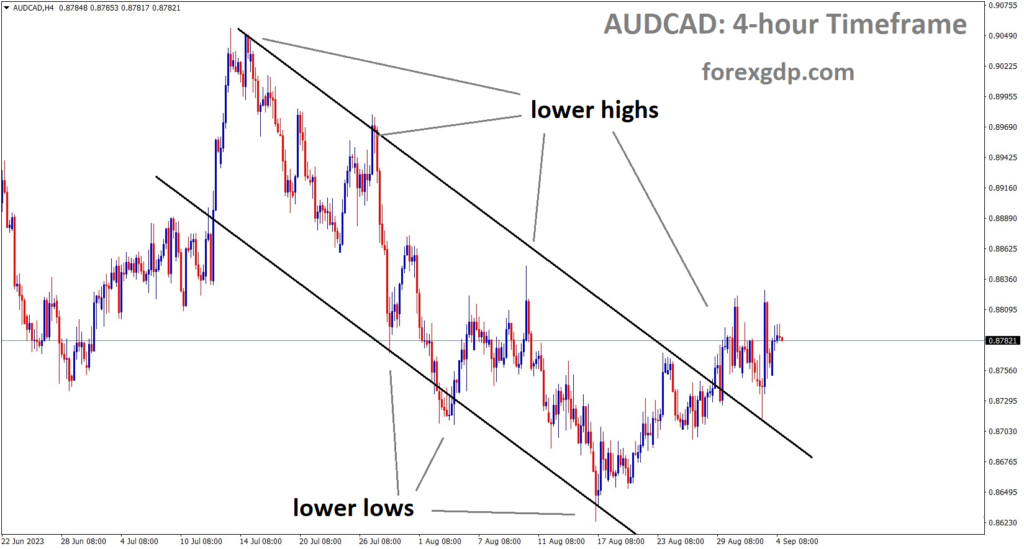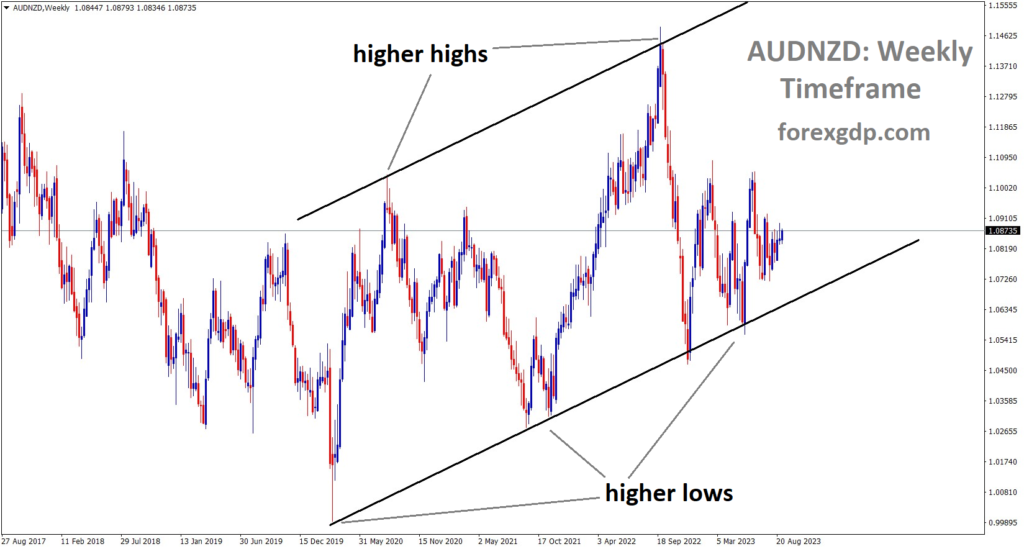Introduction
The Reserve Bank of Australia’s (RBA) monetary policy has long been a cornerstone in shaping the economic trajectory of the nation. As the RBA continues to navigate a complex set of economic indicators, its decisions concerning interest rates are closely watched, not just by financial markets but also by ordinary Australians. In this comprehensive guide, we will delve into the current economic climate, upcoming RBA monetary policy decisions, market sentiment, and more to understand how the RBA’s Monetary Policy influences Australia’s economic future.
The Current Economic Climate: A Deeper Dive into Inflation, Interest Rates, and Economic Growth
Australia’s current economic climate is rife with complexities, with inflation being one of the most pressing issues on the table. As of July, the inflation rate dropped to 4.9%, marking its lowest point in 17 months. However, this figure still hovers above the Reserve Bank of Australia (RBA)’s target range of 2-3%, posing significant challenges for policy decisions. Though the decrease in inflation—from 5.4% in June to 4.9%—may seem like a step in the right direction, it doesn’t necessarily signal immediate relief for the central bank or the general populace. Here’s why.
Inflation and Its Multi-Faceted Impact
Inflation is not just a percentage to be reported; it has far-reaching implications for a country’s economy. High inflation typically affects consumer purchasing power, as everyday goods and services become more expensive. This could lead to decreased consumer spending, thereby affecting businesses and, ultimately, economic growth. It also presents challenges for monetary policymakers, like the RBA, who must figure out how to tame rising prices while also nurturing an environment conducive for economic expansion.
The RBA’s Dual Mandate: A Balancing Act
The RBA faces the unenviable task of juggling two critical objectives: controlling inflation and fostering employment and economic growth. This dual mandate creates a conundrum when inflation rates are high. The traditional mechanism to control inflation would be to raise interest rates. Higher interest rates usually dampen consumer spending and borrowing, thereby reducing demand and eventually slowing down price increases. However, this action could also stifle economic growth and result in job losses, effectively working against the RBA’s other core objective.
The Economic Growth Factor
While tackling inflation remains crucial, fostering economic growth is equally important. Economic growth directly correlates with higher living standards, more job opportunities, and greater fiscal flexibility for public projects and services. Higher interest rates can slow down business investments and consumer spending, creating a ripple effect that impacts employment rates and overall economic expansion. For a country like Australia, with its relatively small population and an economy open to global market forces, maintaining robust economic growth is not just an objective but a necessity.
Global Economic Uncertainties
Moreover, the Australian economy does not operate in a vacuum. Global economic trends, trade wars, and geopolitical events can also influence inflation and economic growth. With the ongoing global economic uncertainties, the RBA has to consider the impact of its decisions not just in a domestic context but also how they resonate internationally.
Consumer and Business Sentiment
High inflation also impacts the economic outlook from both a consumer and business standpoint. As inflation rises, consumer confidence may decline due to increased living costs, affecting retail and other sectors dependent on consumer spending. On the business side, increased costs can lead to reduced margins, which could delay investments or even lead to layoffs—further complicating the RBA’s mission to sustain employment and economic growth.
RBA’s Monetary Policy Decision: Walking the Tightrope Between Stability and Risk
As the financial world keenly anticipates the Reserve Bank of Australia (RBA)’s next move, all eyes are focused on the forthcoming monetary policy announcement. The consensus among market analysts is that the RBA will keep the policy cash rate steady at 4.10%. This expectation isn’t merely an educated guess but is significantly bolstered by recent economic indicators, chiefly the Consumer Price Index (CPI).
The Role of CPI in Monetary Policy
The CPI is a vital economic indicator that measures the average change in the prices paid by consumers for goods and services over a given period. For the RBA, this is a crucial data point, as it helps in assessing the current inflationary environment. In the most recent period, the CPI dipped to 4.9% year-on-year, down from its previous level of 5.4%. Interestingly, this figure also came in below the market consensus estimates, which had projected the CPI at 5.2%.
What Lower-than-Expected CPI Means
A lower-than-expected CPI can be interpreted in multiple ways. It suggests that inflation pressures may be starting to ease, albeit still at levels higher than the RBA’s comfort zone. It could also mean that consumer spending is not as robust as expected, possibly due to the high inflation rates experienced in previous months.
Given these conditions, for the RBA to increase the cash rate would be a bold move—arguably one laden with risks. Higher rates could curb spending even further and put a damper on economic activities, conflicting with the RBA’s mandate to support both price stability and economic growth.
The Cautious Approach: Why Keeping Rates Steady is Likely
With inflation showing a downward trend (even though it’s still above target) and with the CPI coming in lower than expected, the RBA may find sufficient reason to maintain a ‘wait-and-see’ approach. Keeping the cash rate at 4.10% would allow the central bank more time to assess various economic factors, including wage growth, unemployment, and global economic conditions, before making any drastic moves.
The Market Reaction and Beyond
It’s worth noting that any change in the RBA’s monetary policy doesn’t just affect numbers on a chart; it impacts real businesses, investors, and households. A stable or unchanged rate is often seen as a sign of continuity and can engender a sense of security among market participants. However, this does not mean the RBA is out of the woods yet. Its decision will need to be accompanied by a carefully crafted communication strategy, articulating its rationale and setting expectations for future policy directions.
Market Sentiment and Futures: The Market’s Crystal Ball on RBA Decisions
In addition to scrutinizing the Reserve Bank of Australia’s (RBA) public communications and economic indicators like the Consumer Price Index (CPI), market participants often turn to another crucial tool for anticipating central bank decisions: the futures market. Here, the ASX 30-day interbank cash rate futures provide valuable insights into how the market is pricing in different scenarios for future RBA monetary policy.

What are ASX 30-day Interbank Cash Rate Futures?
Firstly, it’s essential to understand what these futures are. The ASX 30-day interbank cash rate futures are financial contracts that allow investors to bet on where the interbank cash rate will be at a specific future date. These rates are often used as a proxy for the RBA’s policy rate, as changes in the latter typically influence interbank rates.
A Glimpse Into Market Expectations
As of the latest data for September 2023, these futures indicate a 14% chance of a 25-basis point rate cut, bringing the cash rate down to 3.85%. This is a slight increase from the previous week, where the odds were 12%. While a 14% chance may not seem like a strong vote of confidence for a rate cut, it’s not an insignificant number either.
Hedging Against Uncertainty
The shift from 12% to 14%, although marginal, is a subtle indicator of a market that is hedging its bets. Why? Because rate cuts are generally seen as stimulative measures that central banks deploy when they see economic softening. With global financial uncertainties and mixed signals from economic indicators, the uptick suggests that some market participants are starting to consider the possibility of a more dovish stance from the RBA, despite the prevailing expectation that the cash rate will remain unchanged.
Global Economic Landscape as a Factor
We should also factor in the broader global economic landscape, which could be contributing to this cautious hedging. Ongoing geopolitical tensions, trade wars, and the lingering effects of the COVID-19 pandemic on global supply chains all contribute to a volatile economic environment. These global factors may be causing some investors to increase their bets on a rate cut, even if domestic indicators like the CPI suggest stability.
The Importance of Market Sentiment
It’s crucial to recognize that while futures market data like this may not directly influence RBA decisions, they do offer a pulse on market sentiment. Understanding this sentiment can help both the RBA and market participants prepare for various scenarios, including unexpected shocks or policy shifts from other central banks, which could ripple through the global economy.
Expert Opinions: Diverging Views on RBA’s Monetary Path
When it comes to predicting the Reserve Bank of Australia’s (RBA) future monetary policy moves, even the experts have differing opinions. While some projections align on the immediate outlook, there are subtle but crucial differences in long-term expectations, each rooted in varying interpretations of economic indicators and strategic assessments. Here’s a deeper dive into the perspectives of four leading financial institutions: Westpac Banking Corp, ANZ Research, Commonwealth Bank, and National Australia Bank (NAB).
Westpac Banking Corp’s Outlook: Steady Now, Cuts Later
Westpac’s economics team projects an extended hold on the current 4.10% cash rate until the same time next year. What differentiates Westpac’s view is their anticipation of a series of rate cuts after this holding period. This projection reflects a belief in a softer economic environment, perhaps due to ongoing inflationary pressures and a possible global slowdown. Westpac appears to be advocating for a cautious approach, giving the RBA ample time to gather more data and refine their stance.
ANZ Research’s Perspective: Eyeing Late 2024 for Action
Like Westpac, ANZ Research predicts that the RBA will keep the cash rate at 4.10% for an extended period. However, they see this hold extending well into 2024. In a noteworthy point of divergence, ANZ suggests a single rate cut could occur in late 2024, contingent upon various economic factors, possibly including inflation aligning more closely with RBA targets. This view highlights ANZ’s focus on the long-term stability of the Australian economy and an apparent willingness to accept shorter-term inflationary pressures as transient.

Commonwealth Bank’s Analysis: The Case for March 2024
Commonwealth Bank is in line with the extended pause on rate changes, but they’ve pinpointed the first quarter of 2024 as the period for a rate cut. They go so far as to indicate that this could happen in a meeting scheduled for March 2024. This level of specificity could be based on their analysis of economic cycles, anticipated global economic developments, or perhaps the Australian domestic economic landscape. Commonwealth Bank seems to be laying out a roadmap that suggests the economy will need a rate cut by this period to maintain economic health.
National Australia Bank’s Projection: A Contrarian View?
NAB offers a more contrarian outlook, forecasting that the cash rate will remain at 4.10% in the short term but anticipates an additional rate hike in November 2023, taking it to 4.35%. This suggests that NAB perceives stronger inflationary pressures or a more robust economic environment that could handle higher interest rates. Their view appears more hawkish compared to the dovish stances of the other banks, introducing an alternative scenario where tightening, rather than easing, could be the RBA’s next move.

Impact on Australia’s Economy: A Multifaceted Equation
The Reserve Bank of Australia’s (RBA) monetary policy decisions have far-reaching implications that reverberate through various sectors of the economy. It’s not just about numbers and percentages; the RBA’s moves have real-world consequences for the average Australian, affecting everything from their job prospects to the price of everyday goods. Below, we delve deeper into the different dimensions impacted by the RBA’s decisions.

Employment and Wage Growth
One of the dual mandates of the RBA is to foster sustainable employment. The policy rate, currently at 4.10%, influences businesses’ willingness to hire or retain employees. A higher rate generally means higher borrowing costs for companies, which could lead to a slowdown in hiring or even layoffs. On the flip side, a lower rate can encourage businesses to invest in expansion, potentially leading to more job opportunities and wage growth.
The dynamic between interest rates and employment is a nuanced one. While a lower rate may encourage hiring, it doesn’t automatically translate into higher wages. In a high-inflation environment, real wages may stagnate or even decline, despite nominal wage increases. The RBA has to walk a fine line, balancing the need to control inflation with the necessity to foster job growth and wage improvement.
The Australian Dollar’s Volatility
The value of the Australian dollar (AUD) is another key economic indicator affected by the RBA’s decisions. A change in interest rates often triggers fluctuations in the AUD. For example, despite the RBA holding rates steady, the Australian dollar recently declined. This could be due to a myriad of factors, such as global economic conditions, investor sentiment, or expectations of future RBA moves.
A weaker AUD has a dual impact. On one hand, it benefits exporters by making Australian goods more competitive on the global market. On the other hand, it makes imported goods and overseas travel more expensive for Australians, adding to inflationary pressures. This currency dynamic adds another layer of complexity to the RBA’s decision-making process.
Stock Market Fluctuations
Interestingly, the stock market showed gains despite the RBA’s decision to maintain its rate. Generally, lower interest rates are favorable for stocks, as they lead to lower discount rates for future earnings, making equities more attractive. However, the relationship isn’t always straightforward. Various other factors, such as corporate earnings reports, geopolitical events, and investor sentiment, can influence stock market behavior.
In a high-interest-rate environment, yield-bearing assets like bonds may become more appealing, causing a shift in investment away from the stock market. Conversely, in a low-interest-rate environment, stocks might be viewed as a better avenue for potential returns. The RBA’s decisions thus have a nuanced impact on asset allocation and investor behavior, which, in turn, affect corporate financing and economic activity.
Conclusion
As we can see, the Reserve Bank of Australia’s monetary policy is a pivotal instrument in shaping the economic future of the nation. With a watchful eye on inflation, productivity, and employment, the RBA walks a fine line in its decision-making process.
In a world rife with economic uncertainties, the RBA’s policy decisions become increasingly critical. While experts offer various outlooks on what to expect, it is clear that the bank’s commitment to its mandate will guide its choices in the coming months and years.
Through these policy shifts, the RBA influences not just the macroeconomic indicators but also the micro-level household finances, thereby affecting every Australian’s daily life. So, the next time you hear an announcement from the RBA, know that it is much more than a simple interest rate change; it’s a move that impacts the economic health of an entire nation.
Click here to read our latest article on Creating the Ultimate Trading Checklist
FAQs
- What is the RBA’s current policy cash rate? The RBA’s current policy cash rate stands at 4.10%.
- What is the RBA’s target inflation range? The Reserve Bank of Australia aims to maintain an inflation rate between 2-3%.
- What was the inflation rate in Australia in July? In July, Australia saw its inflation rate drop to a 17-month low of 4.9%.
- What does the Consumer Price Index (CPI) indicate? The CPI dropped to 4.9% year-on-year, indicating a cautious approach from the RBA and signaling that a rate hike may be considered risky at this point.
- What do ASX 30-day interbank cash rate futures suggest? As of September 2023, these futures indicate a 14% chance of a 25-basis point rate cut to 3.85% at the upcoming RBA meeting.
- What is Westpac’s outlook on RBA’s Monetary Policy? Westpac expects the RBA to hold the rate at 4.10% for an extended period, with a series of rate cuts possibly initiating next year.
- What does ANZ Research predict? ANZ Research anticipates an extended pause from the RBA and a possible rate cut in late 2024.
- What is Commonwealth Bank’s Analysis? Commonwealth Bank predicts that the cash rate will remain at 4.10% until the first quarter of 2024, followed by a potential rate cut.
- What is National Australia Bank’s (NAB) projection? NAB expects one more rate hike in November 2023, taking the cash rate to 4.35%.
- How do RBA decisions affect the Australian economy? The RBA’s decisions have far-reaching impacts, influencing employment, wage growth, currency values, and even stock market performances.
Click here to learn more about the RBA’s Monetary Policy

